Growing indoor plants can instantly refresh any space, adding life, color, and natural beauty. However, one of the biggest challenges many plant lovers face is keeping their plants healthy in rooms with poor ventilation. Low-ventilated rooms often have stagnant air, higher humidity, and limited oxygen exchange — all of which can stress plants over time. Yet, with the right approach, even the most air-starved spaces can be transformed into thriving green oases.
This article explores practical strategies, plant care tips, and the science behind maintaining indoor plants in poorly ventilated environments, ensuring they grow strong and beautiful all year round.
Understanding the Problem: Why Ventilation Matters
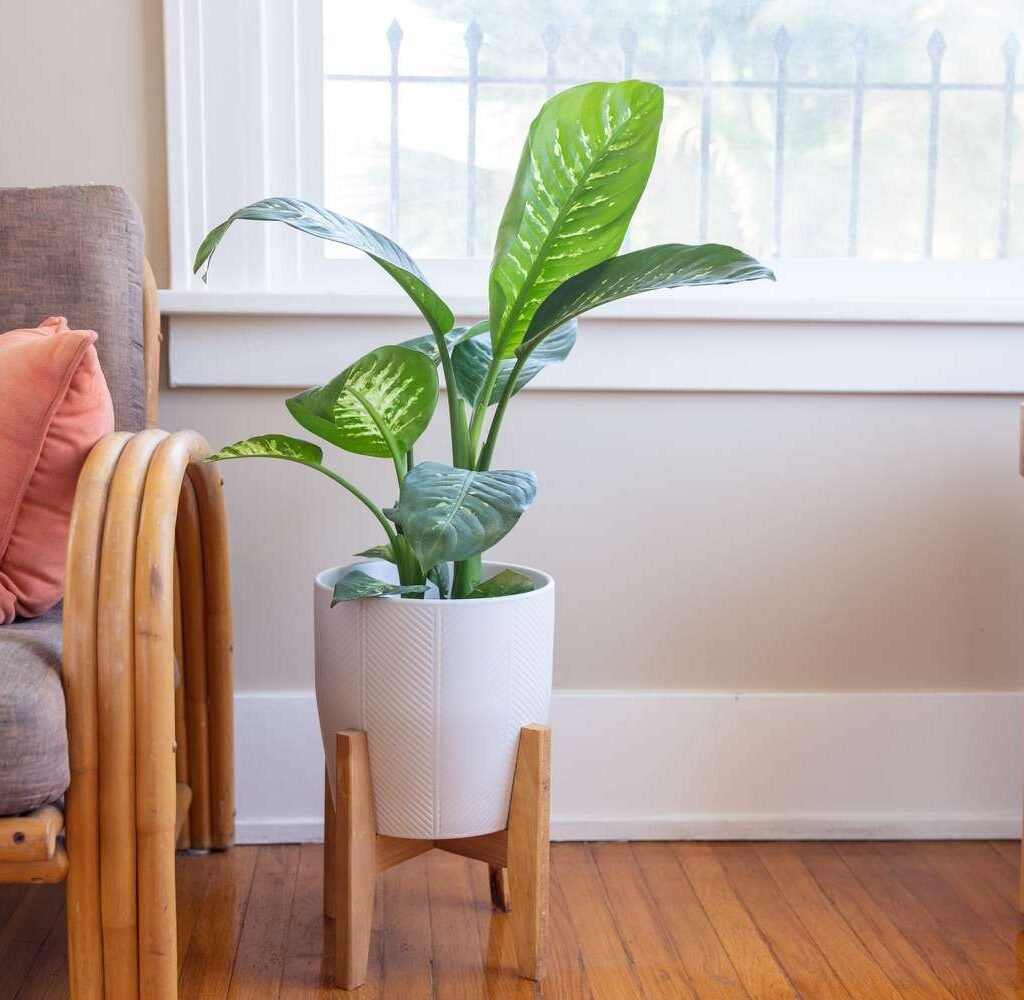
Ventilation plays a key role in a plant’s overall health. Plants rely on proper air movement for several reasons:
- Gas Exchange – Plants absorb carbon dioxide (CO₂) and release oxygen during photosynthesis. Stagnant air limits this exchange, reducing their growth rate.
- Humidity Balance – Without proper air circulation, moisture builds up around leaves, increasing the risk of fungal diseases.
- Temperature Regulation – Poorly ventilated spaces often trap heat, causing stress to temperature-sensitive indoor plants.
- Pollution Buildup – Household pollutants such as volatile organic compounds (VOCs) and dust accumulate in stagnant rooms, negatively affecting plant and human health alike.
Understanding these factors helps you create better conditions even when windows rarely open or air movement is minimal.
1. Choose the Right Plants for Low-Airflow Environments
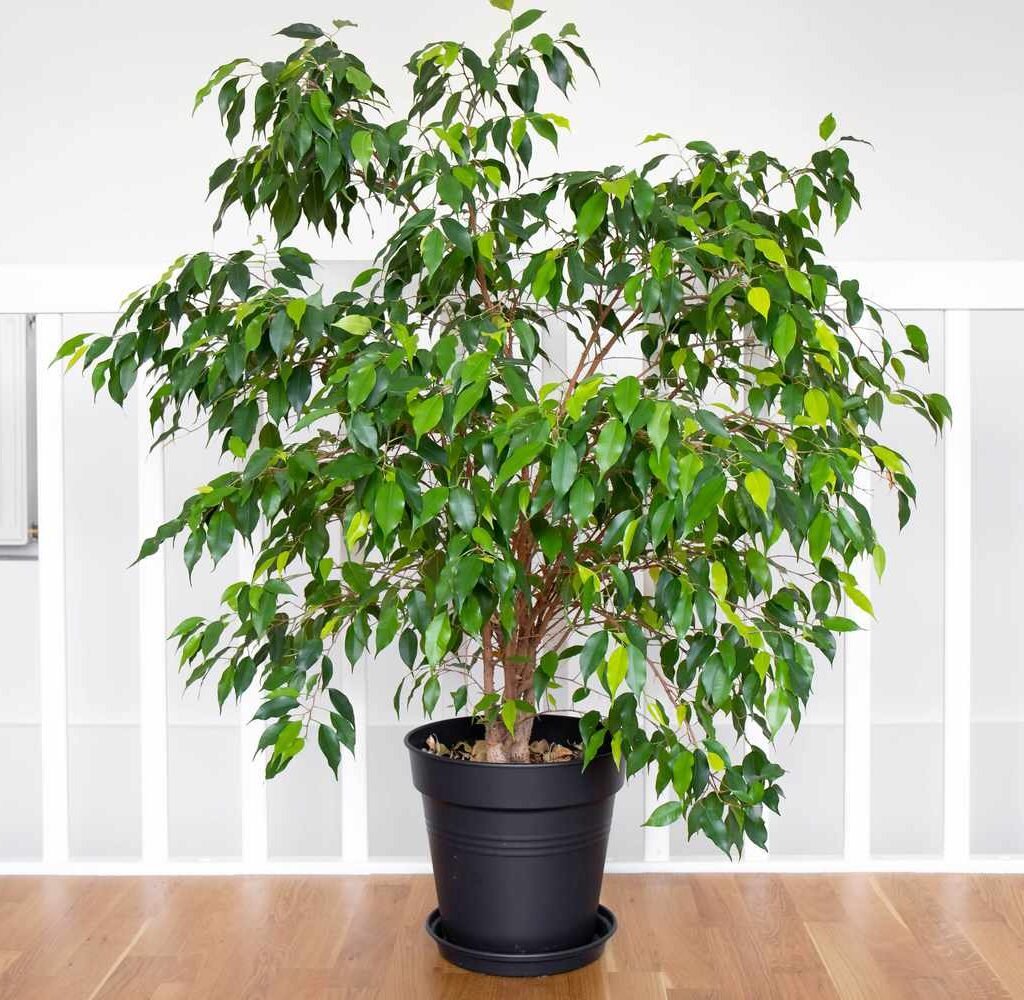
Not all indoor plants tolerate stagnant air equally. When selecting greenery for such spaces, go for hardy, low-ventilation-tolerant plants that adapt well to enclosed conditions.
Some excellent options include:
- Snake Plant (Sansevieria trifasciata): One of the toughest houseplants, it can survive low light, low airflow, and irregular watering.
- ZZ Plant (Zamioculcas zamiifolia): Tolerates shade and dry air, thriving even in corners with little circulation.
- Pothos (Epipremnum aureum): Known for air-purifying properties, this trailing plant grows well in still air conditions.
- Spider Plant (Chlorophytum comosum): An excellent air purifier that removes toxins like formaldehyde and xylene.
- Peace Lily (Spathiphyllum): Thrives in humid, low-light conditions and improves indoor air quality.
These plants are naturally resilient, making them ideal for closed spaces such as offices, bathrooms, or bedrooms with limited airflow.
2. Improve Air Circulation Without Opening Windows
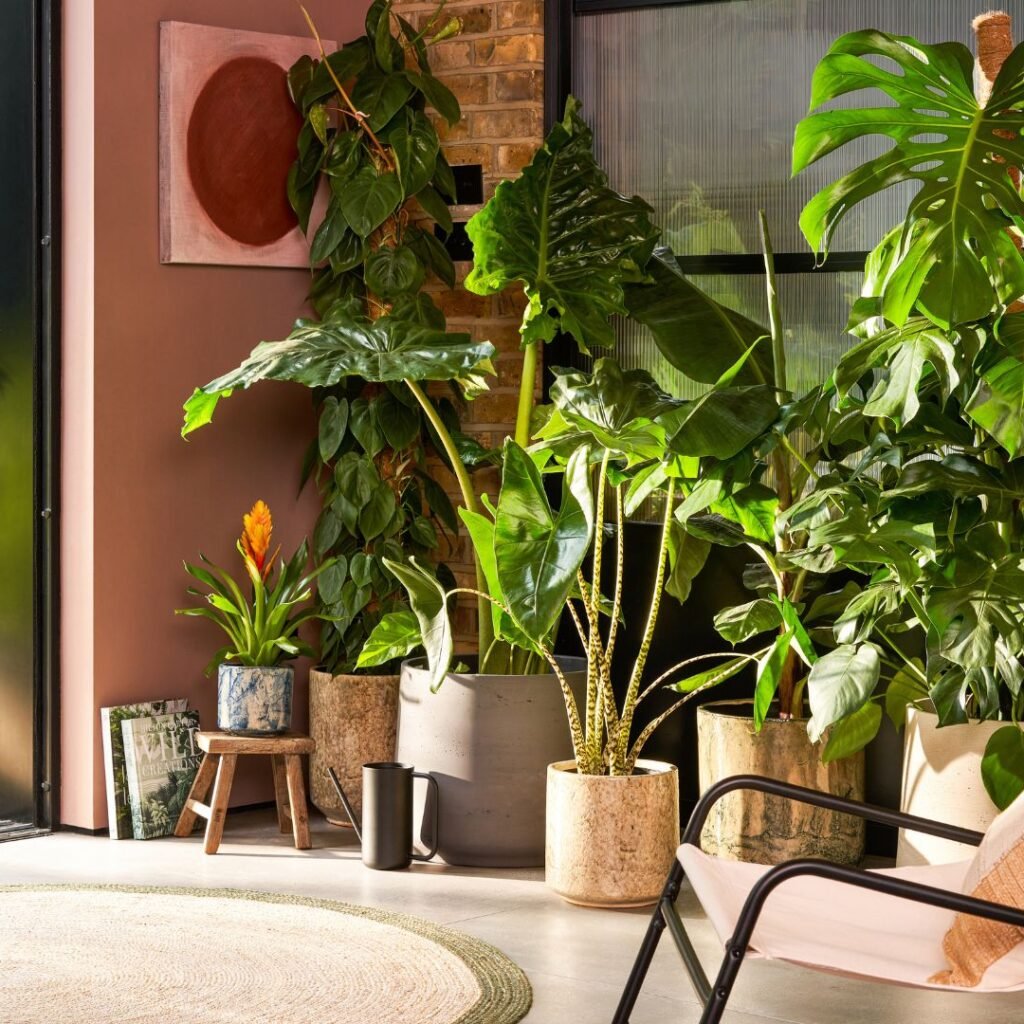
If your space lacks windows or has restricted airflow, there are still ways to improve circulation:
Use a Small Fan
A low-speed oscillating fan can mimic natural airflow. It doesn’t need to run all day—just a few hours daily is enough to prevent stagnant air.
Try an Air Purifier with a Fan
Air purifiers not only clean the air but also gently circulate it. This creates a fresh environment that plants love while removing dust and allergens.
Create Natural Air Movement
Placing plants near doorways, hallways, or ventilation vents encourages indirect airflow. Even the small drafts from HVAC systems can help.
Use Vertical Plant Stands
Elevating plants at different heights allows better air movement around their leaves and reduces humidity buildup in dense clusters.
By maintaining even minimal air circulation, you can mimic outdoor-like conditions, helping plants stay fresh and disease-free.
3. Manage Humidity and Watering Carefully
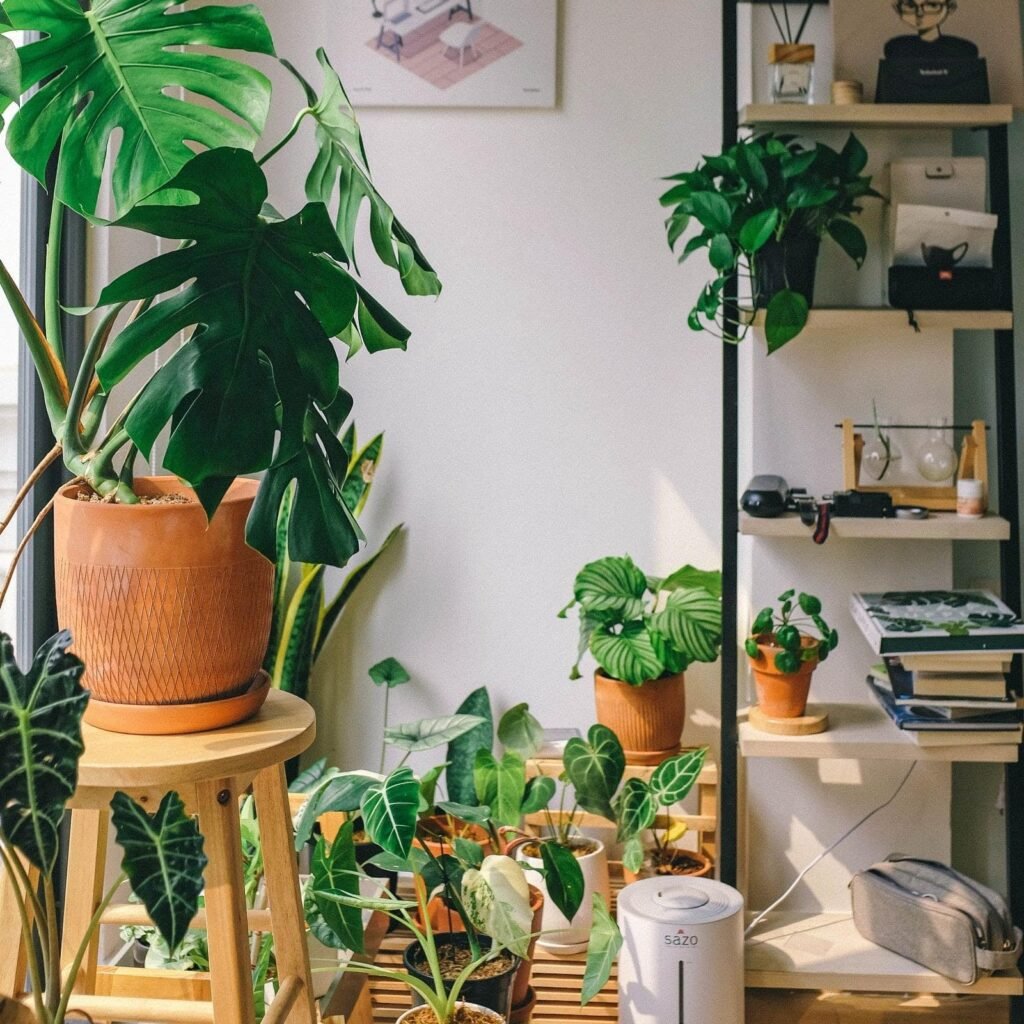
Low-ventilated rooms often trap moisture, leading to excess humidity—a perfect environment for mold, fungus, and root rot. At the same time, air conditioning or heating may dry out the air. Striking the right balance is essential.
How to Control Humidity
- Use a Dehumidifier: Keeps the air dry if humidity exceeds 60%.
- Group Plants Wisely: Avoid overcrowding. Dense clusters trap moisture and reduce air movement.
- Pebble Trays: For rooms that are too dry, use a water-filled pebble tray under pots to gently increase humidity.
How to Adjust Watering
Overwatering is the biggest mistake in low-ventilated environments. Since water evaporates more slowly, always check soil moisture before watering.
- Stick your finger 1–2 inches into the soil—if it feels dry, water lightly.
- Ensure pots have drainage holes to prevent waterlogging.
- Empty saucers regularly to avoid standing water.
Proper watering prevents fungal growth and keeps roots healthy even when air circulation is limited.
4. Use Air-Purifying Plants and Natural Filters
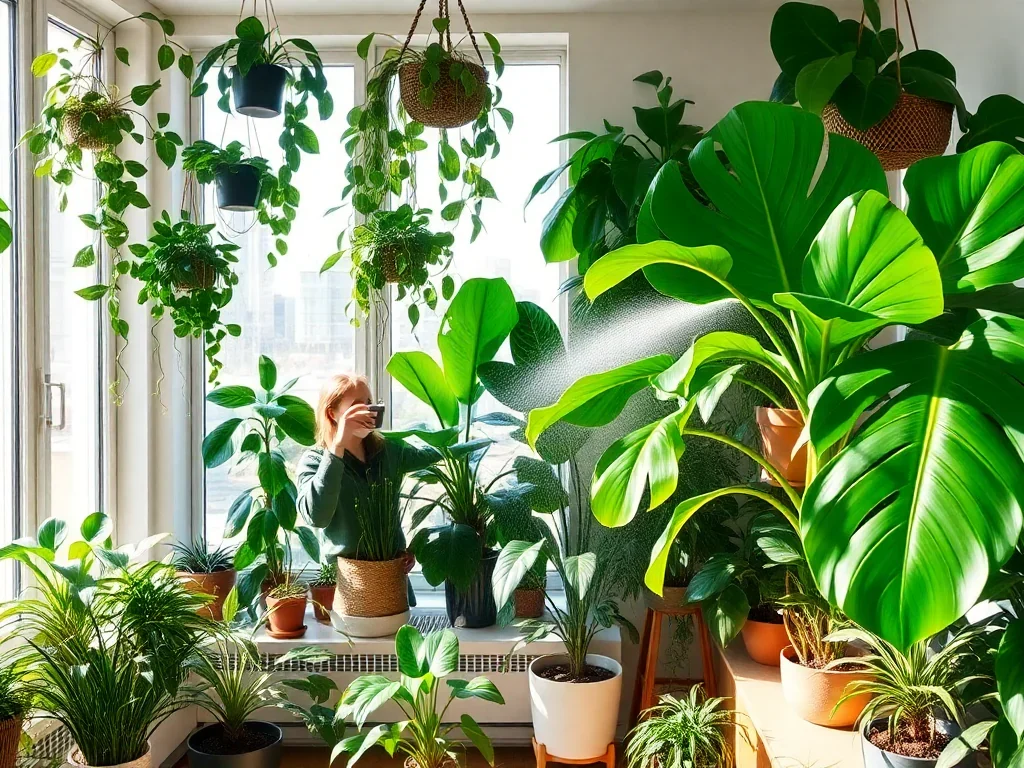
Some plants not only survive in poor ventilation but actively clean and refresh the air. The NASA Clean Air Study identified several species that absorb toxins and improve oxygen levels.
Try incorporating these:
- Areca Palm: Adds humidity and filters xylene, toluene, and carbon monoxide.
- Rubber Plant: Excellent at removing formaldehyde and adapts to low ventilation.
- Boston Fern: Absorbs indoor pollutants and thrives in damp air.
- Philodendron: Grows well in indirect light and purifies the air efficiently.
Adding these natural filters reduces indoor air pollutants, making low-ventilated rooms feel fresher and healthier for both you and your plants.
5. Provide Adequate Light
Low ventilation often coincides with limited natural light, especially in rooms with small windows. Since photosynthesis depends on light, you must ensure your plants receive enough illumination.
Lighting Tips:
- Use LED Grow Lights: Full-spectrum grow lights mimic natural sunlight and promote healthy growth.
- Choose Low-Light Plants: If light is scarce, go for species like pothos, peace lilies, and ZZ plants.
- Rotate Plants Weekly: Move them around occasionally to ensure even light exposure.
Balanced lighting encourages steady photosynthesis and helps offset the slow air exchange typical of poorly ventilated rooms.
6. Keep the Environment Clean
Dust and pollutants build up faster in stagnant spaces. Dust-covered leaves can block sunlight and clog plant pores (stomata), reducing oxygen exchange.
Cleaning Routine:
- Wipe Leaves Weekly: Use a soft, damp cloth to remove dust and keep leaves glossy.
- Clean Pots and Trays: Prevent mold buildup by scrubbing pots and saucers regularly.
- Vacuum or Mop Around Plants: Reduces the presence of pests like fungus gnats that thrive in moist, stagnant environments.
A clean environment ensures your plants breathe freely and remain pest-free.
7. Monitor for Pests and Diseases
Low airflow can lead to an increase in pests such as spider mites, fungus gnats, or mealybugs, as well as fungal infections. To prevent infestations:
- Inspect leaves (especially undersides) weekly.
- Use neem oil spray or insecticidal soap to treat pests naturally.
- Avoid misting leaves excessively, which promotes fungal growth.
Regular observation and quick action will prevent small issues from spreading.
8. Use the Right Soil Mix
In low-ventilated rooms, soil tends to retain more moisture. Choose a well-draining, airy potting mix to prevent root rot.
A good formula includes:
- 50% high-quality potting soil
- 25% perlite or pumice for aeration
- 25% coco coir or peat moss for moisture balance
This blend ensures roots get oxygen even when the surrounding air is still.
Conclusion: Creating a Balanced Indoor Ecosystem
Keeping indoor plants alive in low-ventilated rooms may seem challenging, but it’s entirely achievable with mindful care. By choosing resilient plants, improving air circulation with simple tools, managing humidity, and maintaining cleanliness, you can create a thriving miniature ecosystem indoors.
Remember, plants are remarkably adaptable—they just need the right balance of light, water, and airflow. With consistent observation and small adjustments, your enclosed spaces can turn into lush, vibrant sanctuaries filled with healthy, green life.
So, even if your room doesn’t have open windows or constant fresh air, with the right strategy, your plants can still flourish—proving that nature finds a way to thrive, even in the stillest of spaces.
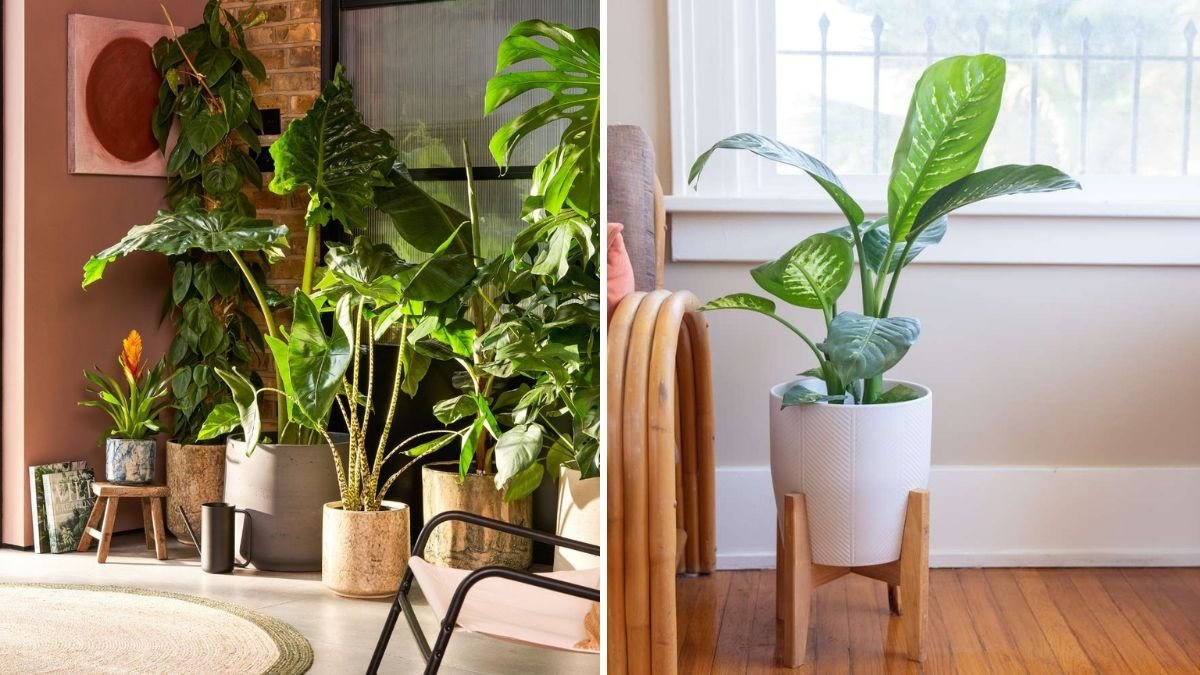




Leave A Comment